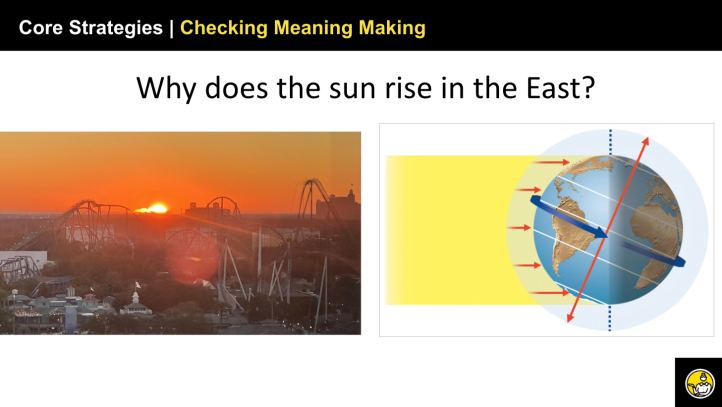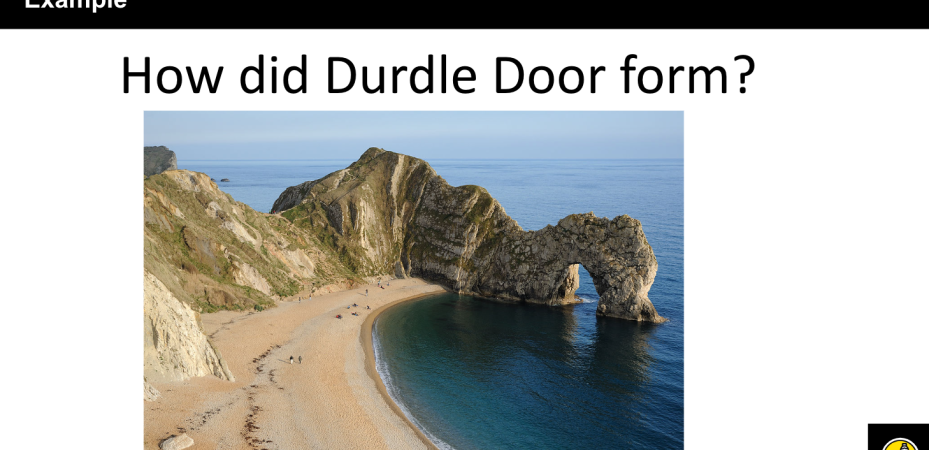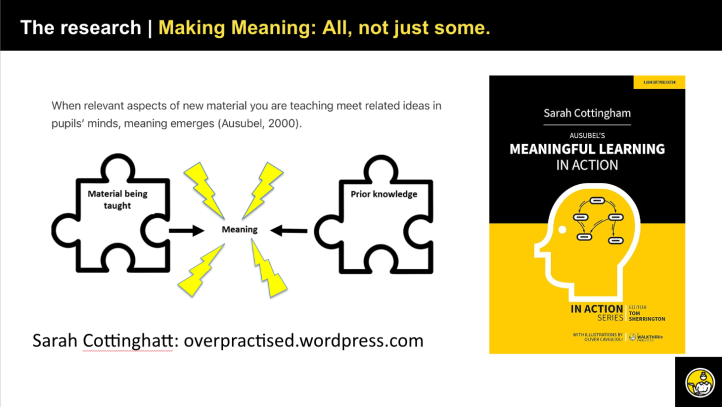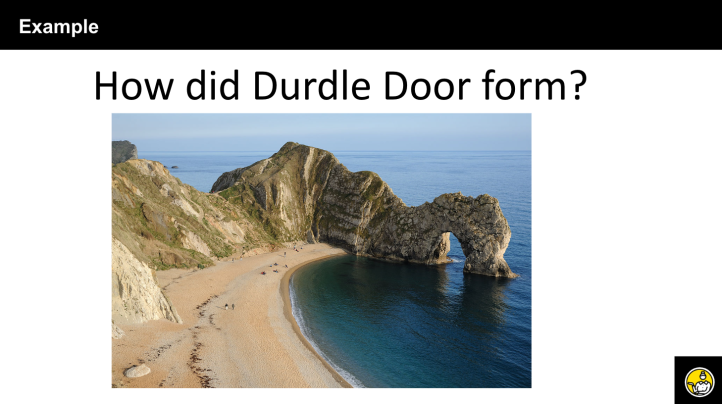Ever since reading Sarah Cottinghatt’s blogs and subsequent In Action book about Ausubel and meaning making, I’ve found it a massively useful reference point for examining teaching practices. The idea is that each individual student has to make meaning themselves, building from their existing knowledge to make sense of new ideas. The extent of their prior knowledge is a massive factor – but so is the process and the time given to that building/bridging process.
In very many lessons, it seems to be a missing piece in the pedagogy with teachers hoping and assuming that meaning making is happening more or less automatically or that this might happen later – or that it’s just too complicated to explore in the moment.
At its worst, we get the ‘bad check for understanding’:
- Teacher: Explains, demonstrates, explains, reads, tells, explains.. Then asks: ‘ok, is that clear ,, does everyone get that yeah? ‘
- Class: Murmurs and nods; nobody speaks.
- Teacher: Great, let’s move on.
The teacher is either assuming each and every student has succeeded in making sense of their explanation simply by listening and following – taking it in – and/or doesn’t think it’s worth the time finding out how that went and what variations there might be around the class. Students are not given time to process the explanation, to run through it, before they are presented with tasks and problems that rely on that meaning having been established.
I would like to suggest ( and please do some trials on this or point me to any you know of…) that a strong pedagogical routine in many subjects ought to be the process of talking through ideas and explanations, soon after having heard them and again later, with scaffolds on hand, to allow all (ie literally everyone) the time to think through the ideas, rehearse their sequence and connections and to use the associated vocabulary themselves. When I see this done, it seems to be powerful and important:
- Teacher: Explains, demonstrates, explains, reads, tells, explains. Then asks: ‘ok, everyone, now let’s check your understanding. Mentally rehearse that for yourself….. then (on a cue) turn to your partner and check each other’s version, one at a time.
- Class: Runs through the Think Pair Share routine, each student talking through the explanation they’ve just heard, each using the language and trying to explain it back tot heir partner
- Teacher: Samples a few responses from the class to hear how they explained things and then responses accordingly, adding details, exploring differences and reteaching as needed.
For example: A teacher might explain the formation of Durdle Door as an example of coastal erosion processes.
There is a diagram produced or referenced that contains all the key vocabulary – hydraulic action, abrasion – and the sequence: crack-cave-arch-stack-stump .
Even hear, when all the information is plain to see, it’s very useful for each student to run through it; to rehearse the sequence crack-cave-arch-stack-stump adding in associated explanations of processes, using the terminology – hydraulic action, abrasion – and so on. It’s consolidatory and provides a check to each student themselves and then, via some sampling, a check for the teacher. After this students can have a go with the unlabelled photo, or to look at another example to see if they can use the language unscaffolded. This is much more likely to be successful after a fully scaffolded talk-through. Significantly: who is doing the talking through? Everyone is. At the same time, in pairs.
This applies to nearly any explanation. Here’s another example:

The function of an alveolus and the gas exchange process can be explained by a teacher without making sense to a student who is avoiding all those words and concepts about diffusion. So: after the explanation, the talk through. Each student can retell the story of the blood flowing through the alveolus, using the terminology with their partner as a verifier, referring to the resources. If they can’t get it right with all the info in full view, it means they haven’t made sense of it. It’s no use quizzing them on it yet. The talk through gives them a chance to get their ideas together, to do the bridging, to make meaning.
I test this out in my training with one of my favourite CPD questions – as described in this post. Recently I’ve changed my approach. I used to ask the question cold – assuming prior knowledge. However, to make the point even more strongly, I now start by explaining why the sun rises in the east myself. Then I ask people to talk it through and sample responses. Even here. it’s just amazing how say three different adults will explain it back to me in a range of ways. They use different language, physical models with their hands, different metaphors. It’s fascinating,

So, that’s my current top tip: Explain first, initiate student talk through in pairs, then sample responses as a check, reteach things in response as needed – before you move on. It’ll save you time in the long run.




[…] Tom Sherrington (@teacherhead). In this blog, he says that you need to reassure yourself that your class has understood your explanation before […]
LikeLiked by 1 person